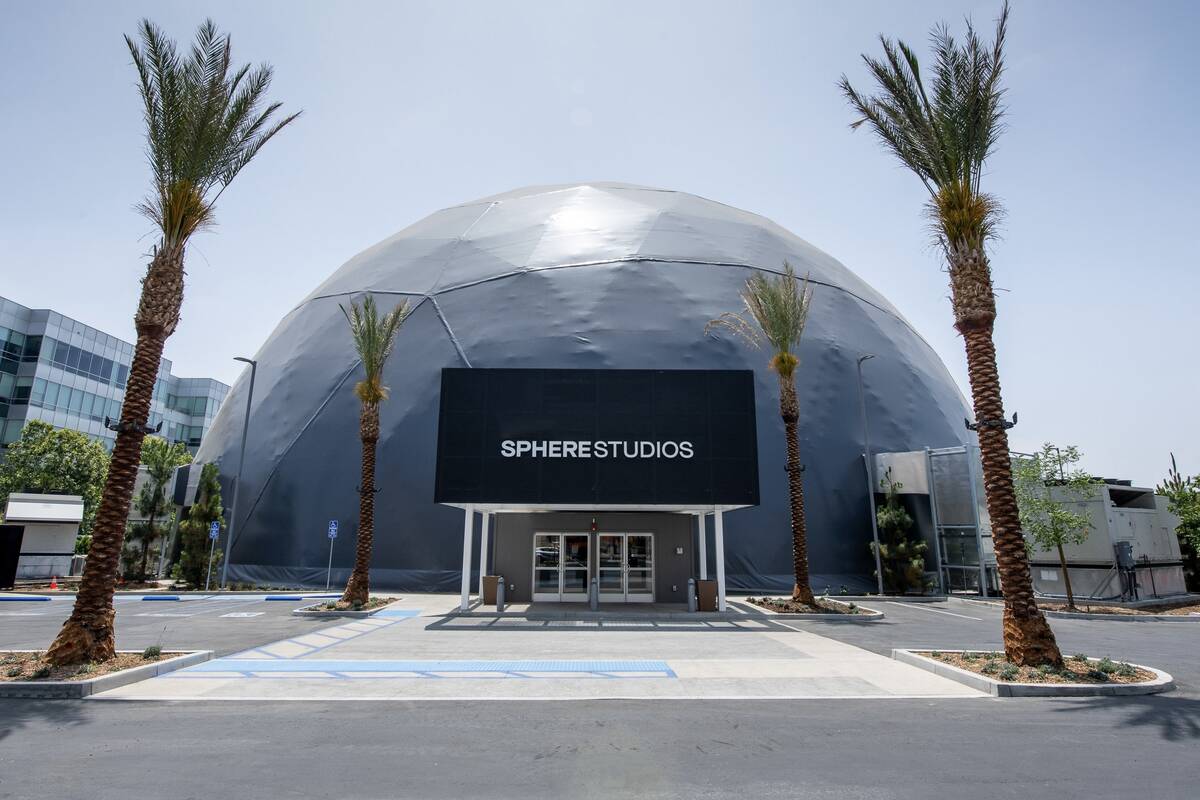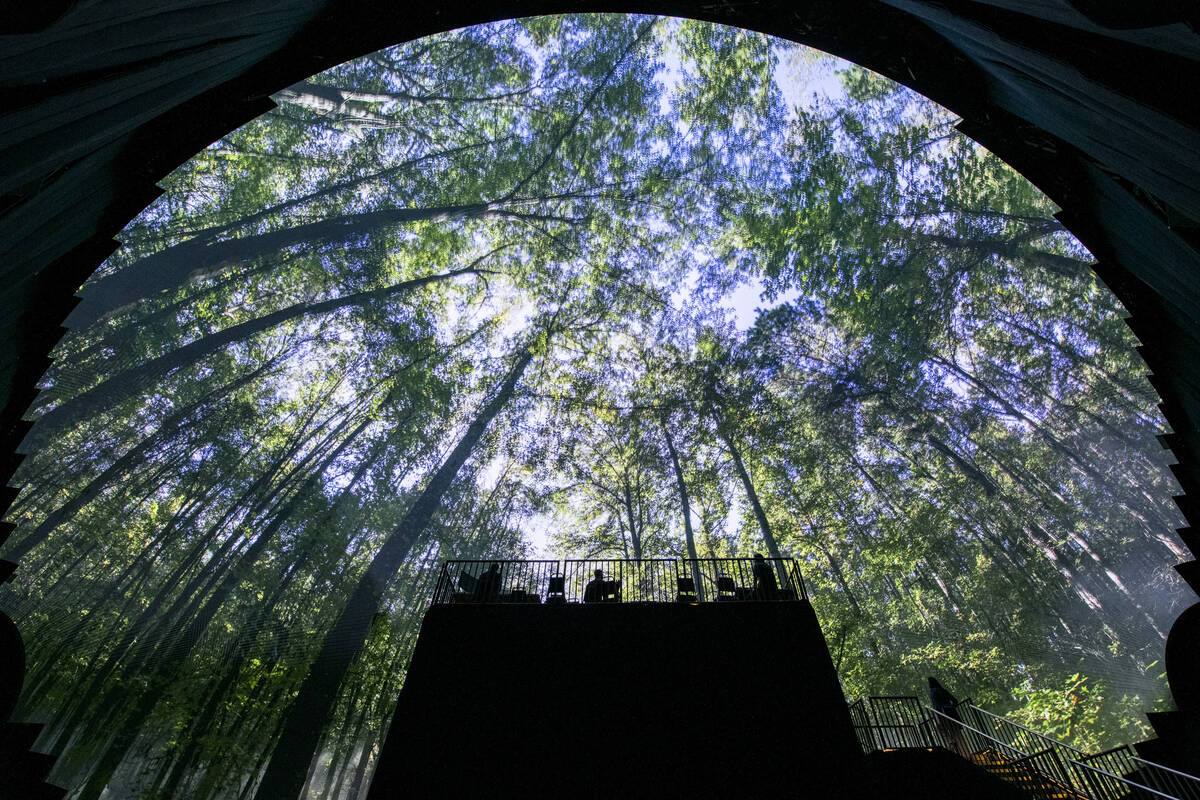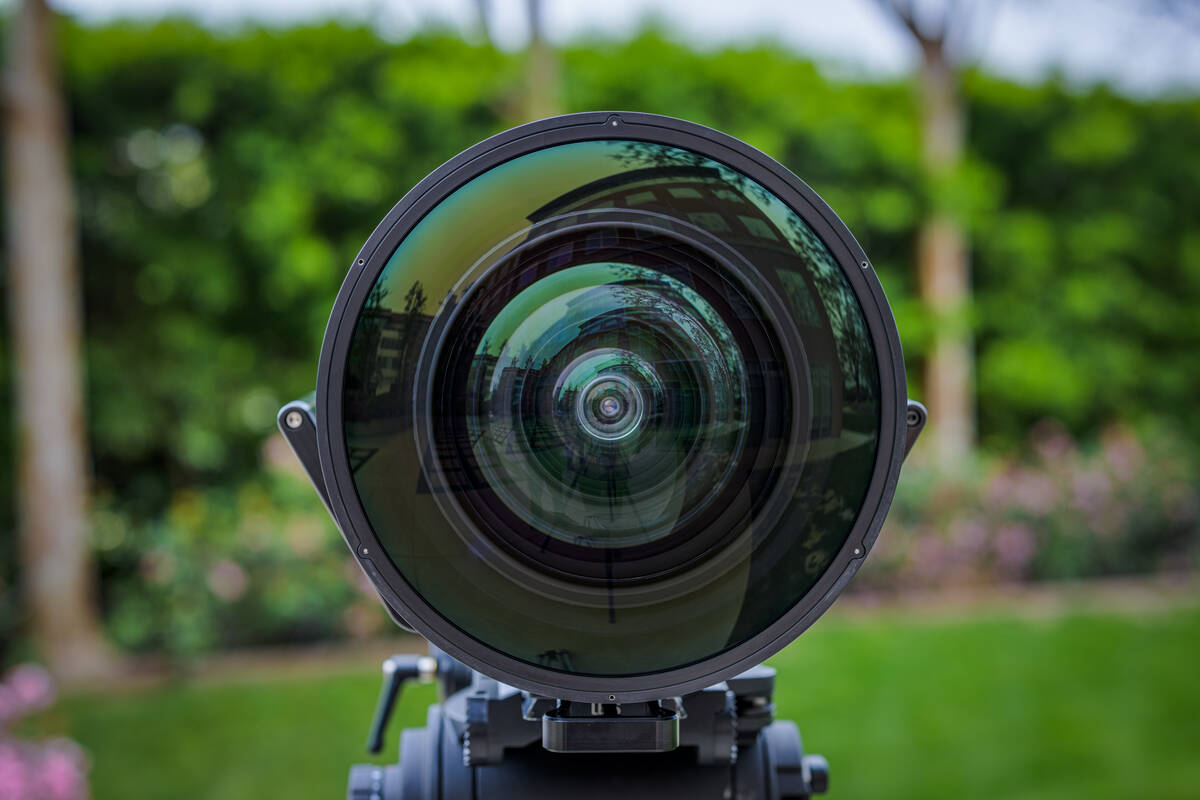Sphere technologists develop special camera for upcoming films
A camera capable of capturing ultra-high-resolution images for a large format is the centerpiece of a new studio that is creating content for the MSG Sphere at The Venetian in Las Vegas.
Sphere Entertainment Co. on Monday announced the launch of Sphere Studios in Burbank, California, as well as the development of “Big Sky,” believed to be the most advanced camera system in the world.
The new camera system is already in use, capturing images that will be a part of “Postcard from Earth,” the Sphere’s first feature film that will debut Oct. 6.
The Sphere’s first entertainment event will be the first of 25 concerts by rock band U2 on Sept. 29.
Tickets on secondary-market seller StubHub range from $400 to $1,700 for U2, with prices fluctuating according to demand. “Postcard From Earth” has tickets priced at $69-$99, not including fees, with massive availability.
“Sphere Studios is not only creating content, but also technology that is truly transformative,” said David Dibble, CEO of MSG Ventures, a division of Sphere Entertainment focused on developing advanced technologies for live entertainment. “Sphere in Las Vegas is an experiential medium featuring an LED display, sound system and 4D technologies that require a completely new and innovative approach to filmmaking.”
Dibble explained that the company’s technologists initially developed film content with a cluster of 10-15 commercially available cameras working together simultaneously. Images captured on those cameras had to be stitched together in post-production to produce imagery on Sphere screens.
“We created Big Sky, the most advanced camera system in the world, not only because we could, but out of innovative necessity,” Dibble said. “This was the only way we could bring to life the vision of our filmmakers, artists and collaborators for Sphere.”
The inventor of Big Sky, Deanan DaSilva, the lead architect of Big Sky at Sphere Studios, said special considerations had to be met in order to produce sharp images on the Sphere’s 16K x 16K immersive display plane.
“Big Sky is a giant leap forward for imaging and a testament to the innovative teams at Sphere Studios who made this technology a reality,” DaSilva said.
“Big Sky allows us to capture cinematic content at a level of detail never before possible, opening up extraordinary possibilities and pushing immersive imaging technology forward in a way that will resonate throughout the entertainment industry,” he said.
The Big Sky lab is one piece of Sphere Entertainment’s 68,000-square-foot campus with production, editing and post-production suites; sound stages for mixing spatial audio; and camera and 3D printing labs.
The Burbank campus is dominated by Big Dome, a 28,000-square-foot, 100-foot high custom geodesic dome with a quarter-sized version of the screen at Sphere in Las Vegas. Big Dome serves as a specialized screening, production facility and lab for content at Sphere, including Sphere Immersive Sound, haptic seats and other features.
Sphere Studios began developing Big Sky in early 2021, with the camera system’s first shoot taking place in October 2022 – progressing from concept to reality at an unprecedented pace. SphereLab, an internally developed image processing software, was also created specifically for Big Sky. To date, the Big Sky team has filed eight patents — and counting — associated with its technology.
Contact Richard N. Velotta at rvelotta@reviewjournal.com or 702-477-3893. Follow @RickVelotta on Twitter.

























